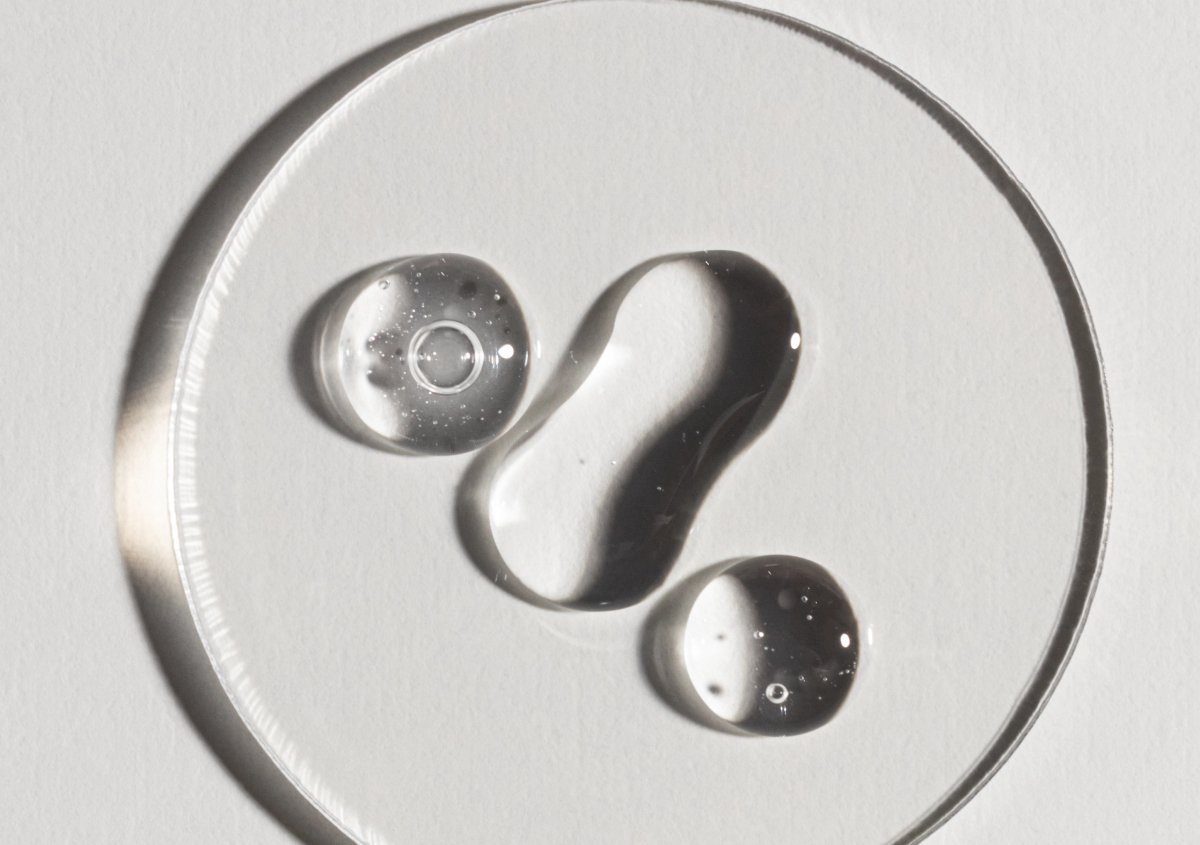
08
Oct
A Guide to Anti-Aging Skincare Ingredients

When it comes to choosing anti-aging skincare, the options can be overwhelming. Countless creams and serums make big promises, but very few are grounded in science or formulated at the right potency to deliver meaningful results. At deRMA Skin Institute, we focus on evidence-based skincare ingredients that address the key functions of skin health.
We’re here to help you cut through the noise and make confident, informed choices about your skincare. This guide highlights the ingredients proven to repair DNA damage, protect against free radicals, restore collagen, calm inflammation, and support the skin barrier.
Retinol and Peptides for Collagen Support
Most people associate anti-aging with retinol, and for good reason. Retinol is one of the most extensively studied and effective ingredients for stimulating collagen, reducing wrinkles, improving cell turnover, and even addressing acne and scarring.
However, it’s important to note that not all retinoids are equal: retinyl esters, like retinyl stearate, are generally considered less potent than retinol or retinal, the most potent being retinoic acid. Over-the-counter formulations are often 20 to 50 times less potent than prescription retinoic acid1, the active form of retinol. Because retinol can cause dryness, peeling, and sun sensitivity, it’s also important to build tolerance gradually and pair it with a moisturizer.
For patients who can’t tolerate retinol, amino peptides are an excellent alternative. They provide many of the same collagen-building benefits, while also boosting elastin and skin elasticity2. Amino peptides are particularly effective for restoring a youthful glow. Bakuchiol, a plant-derived ingredient, is another promising option that provides the same results— significantly decreased wrinkle surface area and hyperpigmentation— for sensitive skin compared to retinoids3.
Green Tea Extract for DNA and Microbiome Repair
Every day, the skin faces stressors that damage cells and disrupt its delicate ecosystem. UV exposure, pollution, and inflammation can cause DNA damage over time, accelerating aging and even increasing the risk of skin cancer. At the same time, an imbalanced microbiome—when harmful bacteria overpower the beneficial ones—can weaken the skin’s defences and speed up visible aging.
Green tea extract is a powerhouse ingredient that supports both of these vital functions. It stimulates DNA repair enzymes in the skin, helping to reverse damage caused by environmental stress, while also fostering a balanced microbiome4. At the right concentration, green tea extract calms inflammation and promotes healthy bacterial diversity on the skin.
Vitamin C and Hidrox for Antioxidant Protection
Our skin is constantly exposed to oxidative stress from sunlight, pollution, and even normal metabolic processes. This stress produces free radicals, which are unstable molecules that attack collagen, elastin, and skin lipids. Left unchecked, free radical damage can accelerate wrinkles, pigmentation, dullness, and loss of firmness.
Antioxidants, like vitamin C (ascorbic acid), help neutralize free radicals before they cause lasting damage to preserve collagen and support a youthful, even complexion. In addition to protecting against oxidative stress, vitamin C also brightens skin tone, though its stability is difficult to maintain, making product selection critical.
Another, more potent option is hydroxytyrosol (Hidrox), a compound derived from olives. Research shows it is up to 100 times stronger than vitamin C, and it helps repair DNA, support the barrier, and calm inflammation5.
Niacinamide for Skin Barrier Repair and Radiance
A healthy skin barrier is essential for hydration, protection, and resilience. When the barrier is compromised—by harsh products, genetic factors, UV exposure, or environmental stressors—skin becomes dry, sensitive, and more prone to irritation and visible aging.
Niacinamide (vitamin B3) is one of the most researched and effective ingredients for restoring barrier strength. It reduces transepidermal water loss (the process by which moisture escapes from the skin), refines pores, and improves overall skin tone6.
In addition to niacinamide, other ingredients that play a supportive role in barrier repair include cica (centella asiatica), aloe, and hydroxytyrosol (Hidrox), which help repair damage, calm irritation, and restore radiance.
Aloe and Cica for Inflammation Control
Chronic inflammation is one of the most powerful accelerators of skin aging (AKA ‘inflammaging’). Inflammation triggers the release of enzymes called matrix metalloproteinases (MMPs), which actively break down collagen and elastin. Over time, this leads to sagging, wrinkles, redness, and a weakened skin barrier.
Addressing inflammation is a cornerstone of effective anti-aging skincare. Ingredients such as aloe, cica (centella asiatica), oleuropein, green tea extract, and allantoin have all been shown to calm inflammation and reduce the activity of MMPs.⁹
Tranexamic Acid and Vitamin C for Pigmentation
Uneven pigmentation is one of the most visible signs of aging. Brown spots, sun damage, and melasma not only affect skin tone but also contribute to a dull, uneven complexion. For years, hydroquinone was considered the gold standard for fading pigmentation. While it can be effective, safety concerns and the risk of rebound pigmentation have limited its long-term use7.
Today, dermatology offers safer, well-studied alternatives that can deliver excellent results without those risks: tranexamic acid, cystamine, arbutin, kojic acid, glycolic acid, niacinamide, and vitamin C (ascorbic acid).
Because pigmentation is a complex process, combination therapy is often the most effective approach. Using multiple ingredients— or in-clinic treatments— together allows for a multi-pronged strategy that fades existing spots while preventing new ones from forming.
Oleuropein for Cellular Renewal
As cells age, some enter a dormant state—often referred to as the “zombie cell” phase—where they stop functioning properly but remain in the skin. These senescent cells don’t just lose efficiency; they also release signals that can impair nearby healthy cells, accelerating visible aging and contributing to inflammation.
At present, ablative lasers, like eCO2 laser, are the most established method for targeting and removing senescent cells, stimulating the skin’s natural renewal process. However, emerging research highlights the potential of oleuropein, a compound derived from olives, as a topical ingredient that may help restore healthier cellular activity8.
Ready to find the right skincare for your unique needs?
Book a consultation at deRMA Skin Institute to discover how the right ingredients and a personalized plan can transform your skin health. Call (888) 803-3762 or request a consultation online to start your journey today.
Citations
1Mukherjee S, Date A, Patravale V, Korting HC, Roeder A, Weindl G. Retinoids in the treatment of skin aging: an overview of clinical efficacy and safety. Clinical interventions in aging. 2006 Jan 1;1(4):327-48.
2Pintea A, Manea A, Pintea C, Vlad RA, Bîrsan M, Antonoaea P, Rédai EM, Ciurba A. Peptides: Emerging candidates for the prevention and treatment of skin senescence: A review. Biomolecules. 2025 Jan;15(1):88.
3Dhaliwal S, Rybak I, Ellis SR, Notay M, Trivedi M, Burney W, Vaughn AR, Nguyen M, Reiter P, Bosanac S, Yan H. Prospective, randomized, double‐blind assessment of topical bakuchiol and retinol for facial photoageing. British Journal of Dermatology. 2019 Feb 1;180(2):289-96.
4Sharma A, Gupta S, Sarethy IP, Dang S, Gabrani R. Green tea extract: possible mechanism and antibacterial activity on skin pathogens. Food chemistry. 2012 Nov 15;135(2):672-5.
5de Toledo Bagatin J, Bagatin E, Campos PA. A pilot clinical study to evaluate the effectiveness of olive extract containing hydroxytyrosol for oral and topical treatment of melasma. Biopharm. Res. 2020;17:48-62.
6Mohammed D, Crowther JM, Matts PJ, Hadgraft J, Lane ME. Influence of niacinamide containing formulations on the molecular and biophysical properties of the stratum corneum. International journal of pharmaceutics. 2013 Jan 30;441(1-2):192-201.
7Fabian IM, Sinnathamby ES, Flanagan CJ, Lindberg A, Tynes B, Kelkar RA, Varrassi G, Ahmadzadeh S, Shekoohi S, Kaye AD. Topical hydroquinone for hyperpigmentation: a narrative review. Cureus. 2023 Nov 15;15(11).
8Menicacci B, Cipriani C, Margheri F, Mocali A, Giovannelli L. Modulation of the senescence-associated inflammatory phenotype in human fibroblasts by olive phenols. International Journal of Molecular Sciences. 2017 Oct 30;18(11):2275.
⁹Derma Skin Institute. 5 Dimension Skin Plan™. Derma Skin Institute; 2025. Available from: https://dermaskininstitute.com/5-dimension-skin-plan/

Dusan Sajic, MD, PhD

Richard Backstein, MD

Sonja Sajic, CCPA

Daniel Wong, MD, FRCPC

Tiffany Chen, MD, FRCPC, DABD

Toni Alberto, CCPA
With more than 20 years of experience, deRMA Skin Institute strive to offer patients the most advanced treatments available to keep their skin healthy and looking its best. Board Certified Dermatologist, Dusan Sajic, MD, PhD, board-certified Plastic and Reconstructive Surgeon, Richard Backstein, MD, FRCSC, Sonja Sajic, CCPA, Toni Alberto CCPA, Tiffany Chen MD PRCPC and Daniel Wong MD FRCPC are committed to providing state-of-the-art medical, surgical and cosmetic treatments to all patients in Guelph, Burlington, Cambridge, Kitchener, Hamilton, Milton, and surrounding areas.
Contact Us
Fields marked * are required
If you are an existing patient inquiring about appointments and services, please contact
Guelph Cosmetic Department: (888) 803-3762 [email protected]
Guelph Medical Department: (519) 836-8558 [email protected]
Burlington Cosmetic Department: (888) 803-3762 [email protected]
Burlington Medical Department: (905) 849-5057 [email protected]


